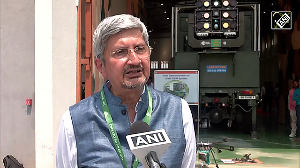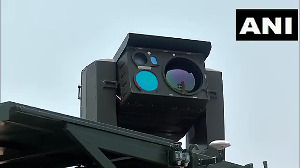Risk-averse investors who prefer to invest in 'assured return' instruments have found the going tough in recent times. The soft interest rate regime has resulted in their returns dwindling rapidly.
Perennial favorites like government savings schemes and other instruments have all taken a hit. We undertook a study to see how various instruments compare with each other and came across some interesting facts.
For the purpose of our study let's consider a 6-year span to be the benchmark period. The Public Provident Fund (despite it's attractive 8 per cent return) has not been considered as the returns are not fixed per se. Interest rates for a PPF account are subject to revision, on the other hand instruments like National Savings Certificate (NSC) offer the mentioned interest rate through out their tenure.
The other instruments we have considered are the Government of India 8% Savings (Taxable) Bonds, 2003 and a fixed deposit (with an AAA rating) for 6-year tenure. To enhance the scope of comparison we have also included the Kisan Vikas Patra (KVP). Despite the higher tenure i.e. 8 years and 7 months, KVP's have been included using the pre-mature encashment clause, i.e. the maturity value at the end of 6 years has been considered for the purpose of comparison.
The fabulous foursome
| NSC | 8% Bond | KVP | FD | |
| Tenure | 6 yrs | 6 yrs | 8yrs 7months | 6 yrs |
| Minimum Invt. (Rs) | 100 | 1,000 | 100 | 5,000 |
| Maximum Invt. (Rs) | No limit | No limit | No limit | No limit |
| Tax Benefits | Sec.88 & 80L | Nil | Nil | Sec. 80L |
| Safety/ Rating | Highest | Highest | Highest | AAA |
| Interest rates | 8.16% | 8.00% | NM | 6.25% |
Now let's see what the returns would look like for an investor who was to invest Rs 10,000 in each of the schemes listed above.
We have assumed that the investor has exhausted the benefit under Section 80L and all further interest income will be taxed. Also the investor falls in the 30 per cent tax bracket and claims benefits under Section 88 at 15%.
The winner is. . .
| NSC | 8% Bond | KVP | FD | |
| Amount invested (Rs) | 10,000 | 10,000 | 10,000 | 10,000 |
| Maturity value (Rs) | 16,010 | 16,010 | 14,884 | 14,387 |
| Interest income (Rs) | 6,010 | 6,010 | 4,884 | 4,387 |
| Tax payable @ 30% | 1,803 | 1,803 | 1,465 | 1,316 |
| Net of tax (Rs) [i] | 4,207 | 4,207 | 3,419 | 3,071 |
| Rebate u/s 88 [ii] | 1,500 | Nil | Nil | Nil |
| Actual gain [i+ii] | 5,707 | 4,207 | 3,419 | 3,071 |
The numbers say it all. National Savings Certificate emerges as the superior option amongst its peers by a huge margin. Not only is the interest rate offered more attractive, the tax benefits prove to be the clincher.
While the 8% GOI bond is a close competitor, it loses out on account of the lack of tax benefits.
Critics might point out that KVP offers a significantly higher rate of return and 6-year tenure doesn't provide an accurate picture. However 8 years and 7 months is a very long time frame and the interest rate scenario can change significantly, hence the 6-year tenure.
Also corporates are known to offer fixed deposits at higher rates; however in such a case the safety levels are compromised since the deposits are unsecured in nature. The premise of our study was the options available to a risk-averse investor.
Having proven NSC's prowess, let's not ignore the fact that liquidity is one area where instruments like KVP and fixed deposits have an edge. National Savings Certificates can be pre-maturely encashed only in case of:
-
Death of the holder,
-
Forfeiture by a pledgee being Gazetted Government Officer when the pledge is in conformity with these rules,
-
When ordered by the Court of Law.
For an investor who hits a cash crunch, his investments in NSC will prove to be of little utility.
If interest rates were to move upwards in the days to come, the feasibility of these schemes is likely to be seriously tested.
However, if you are an investor who insists on investing in assured return schemes, National Savings Certificate is your best bet.






 © 2025
© 2025